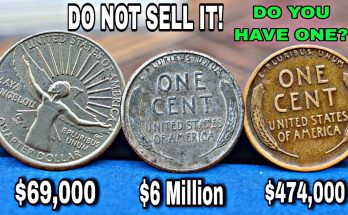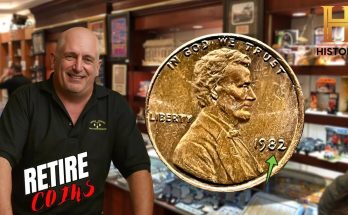Besides this unique feature, dimes in the mint state should have a strong strike and mint luster, making grading high-quality specimens a task for professionals. Finally, be aware that these coins are still modern, particularly clad ones minted after 1965.
Grading Standards
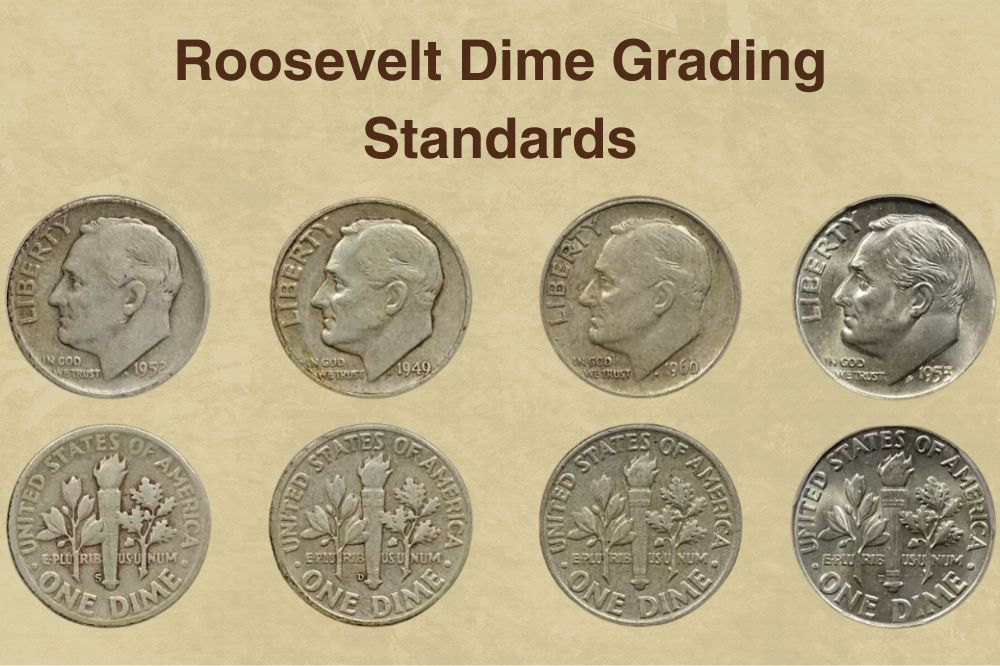
Once you start with numismatics, you should become familiar with coin grading. It is the only way to determine each piece’s market value based on its condition, level of preservation, the mint mark, the date, minting flaws, and later damage.
Thanks to Dr. William H. Sheldon, this task is much more effortless than before. This numismatist established the original 70-point scale in 1949 to help grade Early American Cents. In the 1970s, the ANA adapted it for all US coinage.
Despite the precision of the coin description, it is impossible to grade every piece under the same condition. You should be aware that even specimens of the same series were minted differently, depending on die condition and design quality.
Sometimes, you should balance between strict guidelines and unique circumstances tied to a specific mint or set of coins. However, using this scale is still the most reliable, officially accepted way to evaluate coinage while paying attention to exceptions.
Understanding Grades for Roosevelt Dime
The first Roosevelt dimes appeared in 1946 but are still modern according to the numismatic criteria. There are also a few complications when you want to evaluate these coins.
The first thing to determine is their age since coins minted before 1965 were made of silver alloy. They are always worth something despite their grade. In other words, even the lowest-quality pieces cost at least as much as the silver they contain.
Another thing to consider is Full Bands dimes. They feature particular details referring to the horizontal twin bands along the torch. Experts use unique techniques for grading these specimens.
Roosevelt dime |
|
| Face value | Ten cents ($0.1) |
| Compound | Silver |
| Copper and nickel | |
| Coin weight | 2.50 g (0.08038 troy ounces) |
| 2.268 g (0.08000 ounces) | |
| Coin diameter | 17.91 mm (0.70511 inches) |
| Coin thickness | 1.52 mm (0.05984 inches) |
After years of struggling, the US Mint found a way to increase the die-lasting but did that to the detriment of the quality. Therefore, sets produced after 1981 have a shallower design, making them flattened and dull.
How to Grade Roosevelt Dime?
Determining the dimes’ condition is the only way to assess their value. The estimation is based on each piece’s condition, the degree of wear, and possible damage. Besides, it is advisable to check for minting errors since they can increase the value of your specimen many times over.

FREE Appraisal & Sell Your Coins
If you are still unsure about the price of your coins, you can appraise and sell your coins for free through our verified platform.
1. About Good (AG 3)
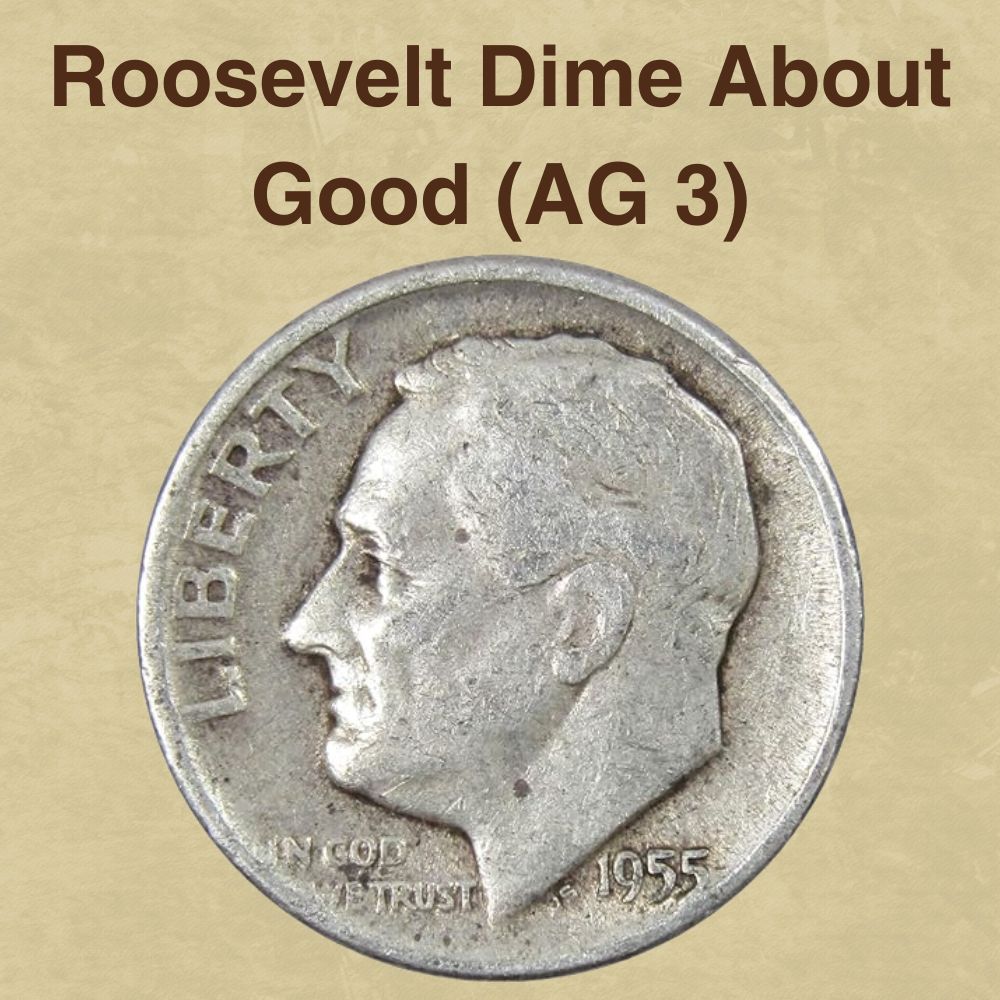
Roosevelt dimes are ten-cent coins minted from the end of WWII (1946) to the present. Most are heavily circulated and in bad condition, so you can expect them to be worth their face value. If you have one coin in this low grade, be sure it is non-collectible.
The only way to use your dime is to treat it as a means of payment and buy something, regardless of the year of issue. On the other hand, silver specimens can be an excellent investment, considering the constant increase in this precious metal’s price.
Obverse
Despite its value of ten cents, this coin is non-collectible. The obverse is worn out with an outlined President’s profile without most details. The date and all inscriptions are visible and readable but often merged with the rim.
Reverse
You can recognize all parts of the design on this side, but they are faded and unattractive. Design details are totally or at least partially worn away, while the rim merges into the denomination. A torch and olive and oak branches are flat and look dull without any appealing detail.
2. Good (G 4)
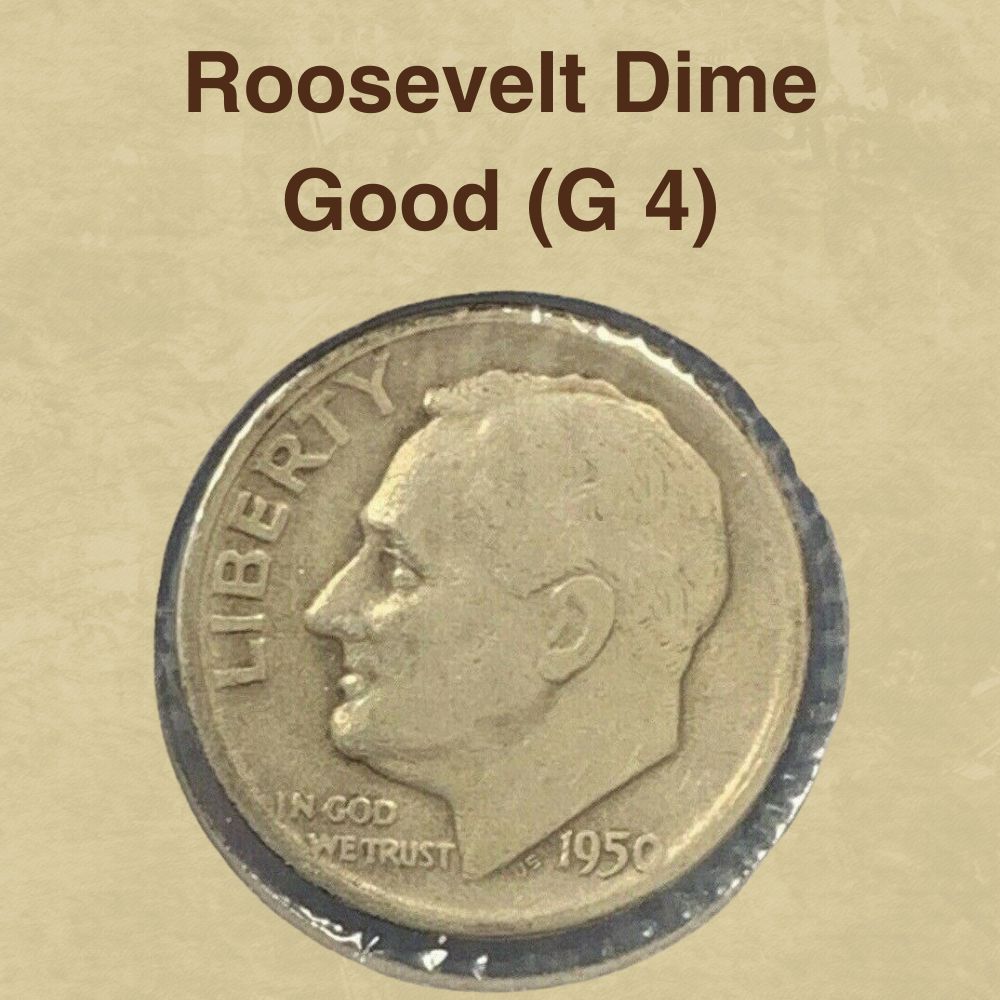
Roosevelt dimes in this grade are the least attractive collectibles in the set. They rarely show any detail, particularly fine ones. You can see a low-profile rim, a visible but weak date, and faint letterings.
Obverse
The best thing to get when you have such a low-ranked coin is facial contours on the President’s portrait. His hair is flattened without separated strands, while his ear is smooth with slight details. Even though the date is legible, the last digit is often weak and faded.
Reverse
The composition depicted on this coin side is recognizable, but the torch and both branches are without appealing details that make this coin type so collectible.
There are no vertical lines on the flame and torch itself, while leaves on twigs are non-existent. Legends are visible but weak, while the mint mark is effortlessly recognizable.
Want to Find the best coin dealer near you? Here we can help. (with customer reviews and Rating)
3. Very Good (VG, VG 8, and VG 10)
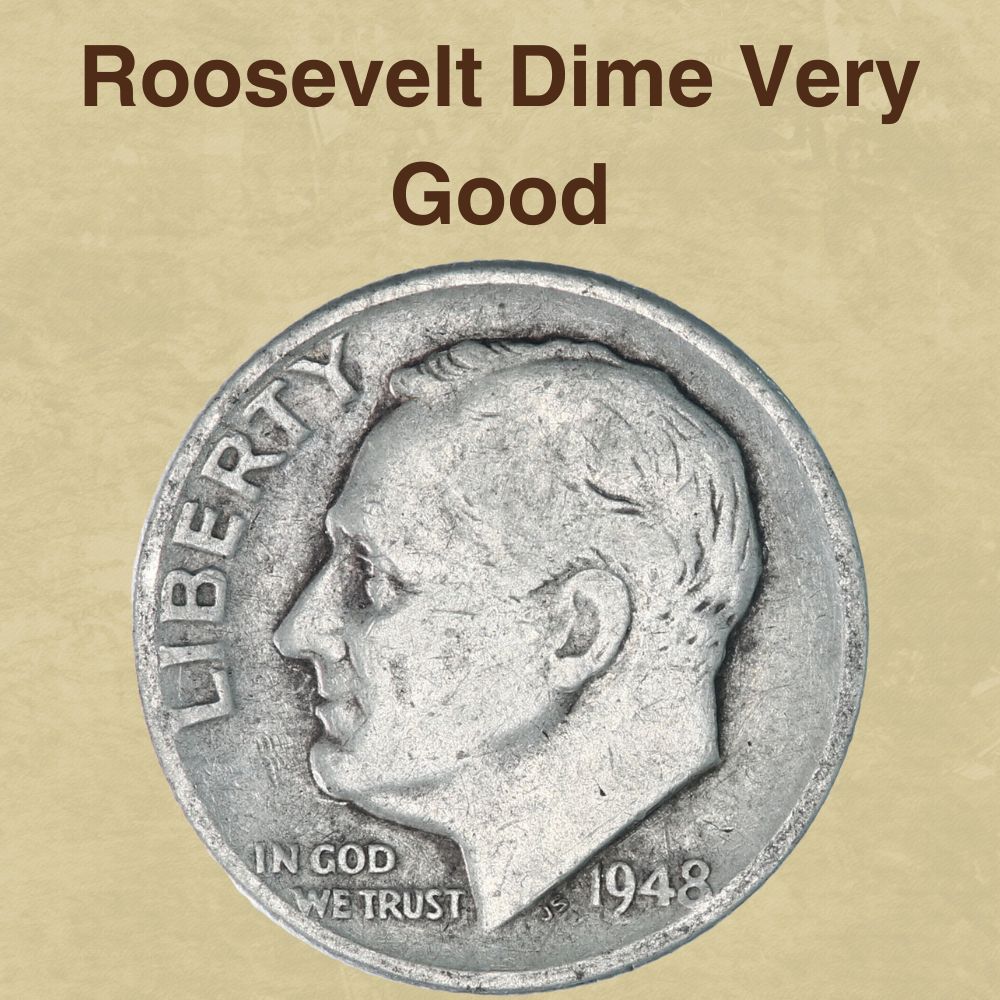
Even though dimes of such quality are collectibles, they rarely reach serious prices on the market. Moreover, dedicated numismatists almost never consider them a valuable part of any collection because there are plenty of affordable coins from this series in the highest grades.
Obverse
You can be sure your dime is ranked like this when the entire President’s head is weak and flattened. Most hair and ear details are smooth, making the coin dull. On the other hand, the rim is always complete, while the date and inscriptions are readable.
Reverse
The torch’s outer vertical lines are almost invisible, while the flame is only an outline. You can barely recognize any details on branches, particularly foliage, but the rim is complete.
4. Fine (F, F 12, and F 15)
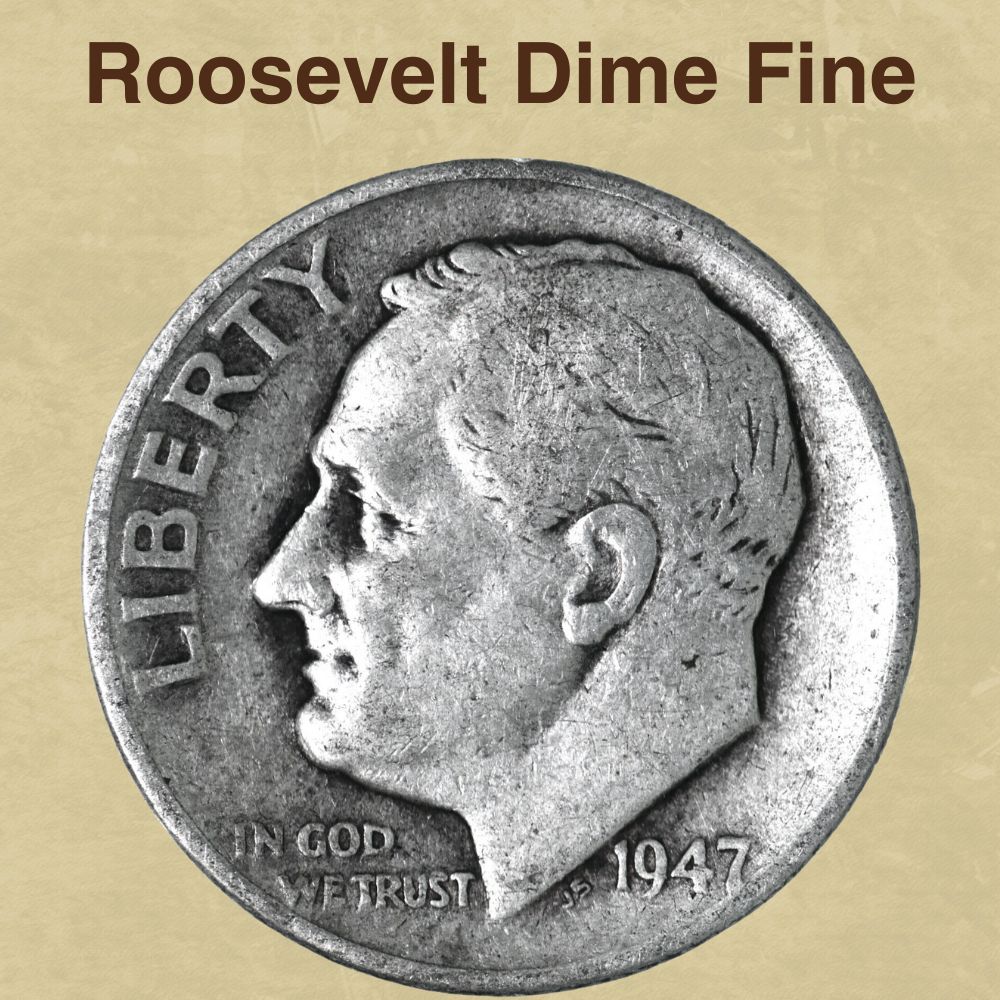
Like other grades based on the Sheldon scale, these coins can show more or less details, depending on their sub-rank. Depending on the preservation level after years of circulating, you can recognize only parts of the original design. However, novices often appreciate such dimes as affordable and lovely pieces.
Obverse
Dimes in this rank show recognizable hair details with limited areas of merged strands. It is impossible to see fine lines just above the President’s ear, plus you can spot flatness between his cheek and the eye. Most of the ear’s inner edge is worn away, while the entire face looks weak.
Reverse
Vertical lines on the torch are barely visible, while central details on the flame are missing, and it looks nearly smooth. Olive leaves are without original roundness but are separated. Oak leaves show flattened inner details.
5. Very Fine (VF, VF 20, VF 25, VF 30, and VF 35)
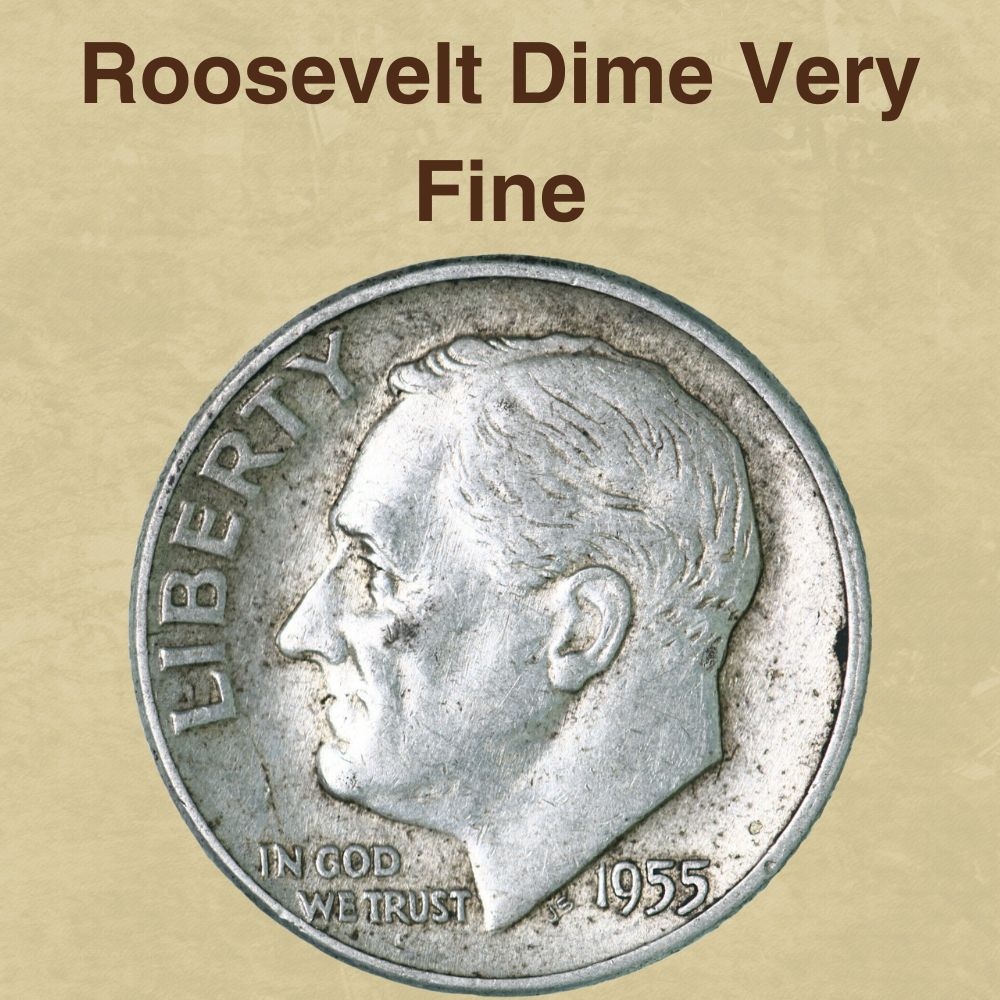
These dimes look decent, with slightly worn-out surfaces and partially visible details. Inscriptions are recognizable and readable, and their overall look is appealing. Some collectors consider these coins attractive because of the favorable ratio of their appearance and price.
Obverse
You can notice wear spots on Roosevelt’s cheek, hair, ear, and chin. On the other hand, hair strands are mostly separated, with about 75% of visible details.
Reverse
Traces of wear and tear are still noticeable on flame, but you can see some details in such-rated dime. Vertical lines on the torch are recognizable, and most details on the leaves are evident.

FREE Appraisal & Sell Your Coins
If you are still unsure about the price of your coins, you can appraise and sell your coins for free through our verified platform.
6. Extra Fine (EF 40 and EF 45)
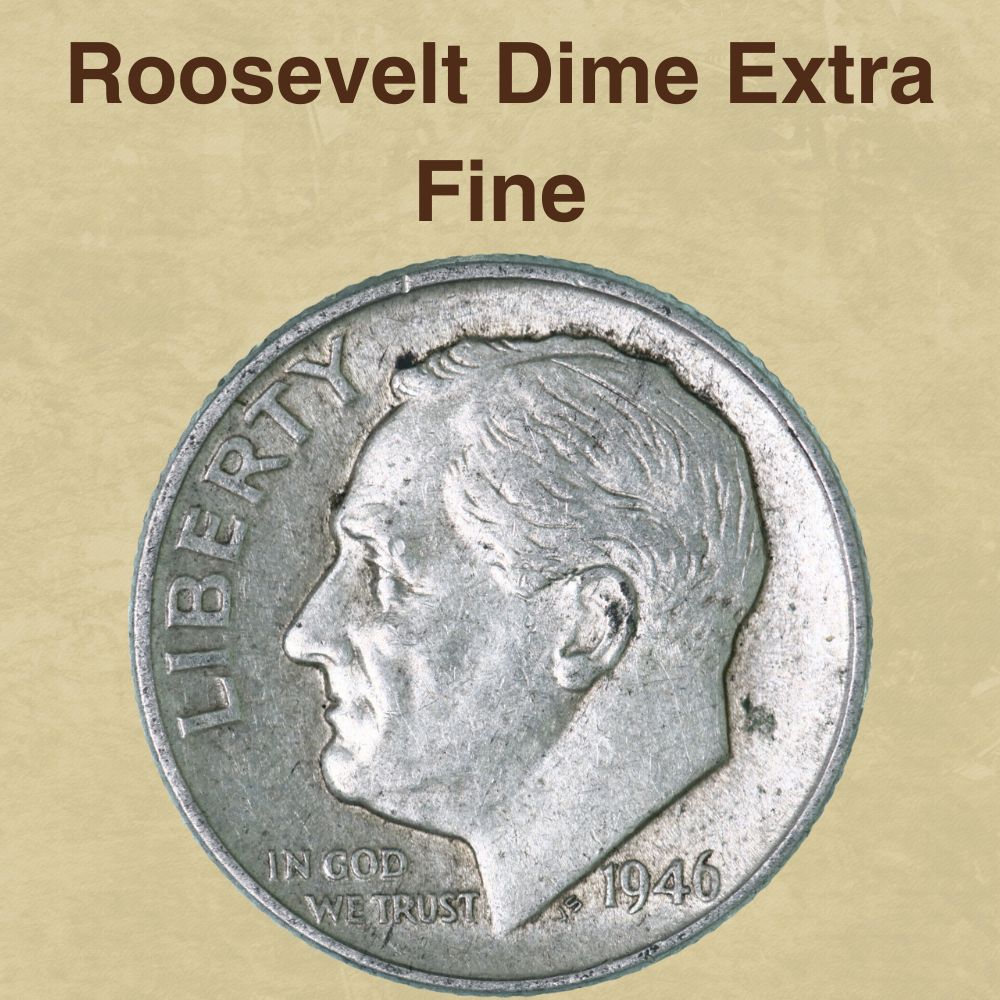
You can spot partial wear on these coins’ surfaces. Interestingly, these changes are visible but not distracting from their overall appearance. The reason is probably an excellently looking torch, clear flame lines, and appealing President’s profile.
Obverse
Most details on Roosevelt’s hair are visible besides slight flatness instead of fine lines. His jaw and ear display some smoothness, but rounded contours are almost fully preserved above and below his eye. Be prepared to notice traces of mint luster on these coins’ surfaces.
Reverse
The flame is slightly smooth, with some details remaining. For instance, all vertical lines are separated, making this coin side attractive. Even though olive and oak leaves still have areas of flatness, they show more details than lower-graded dimes.
7. About Uncirculated (AU 50, AU 55, and AU 58)
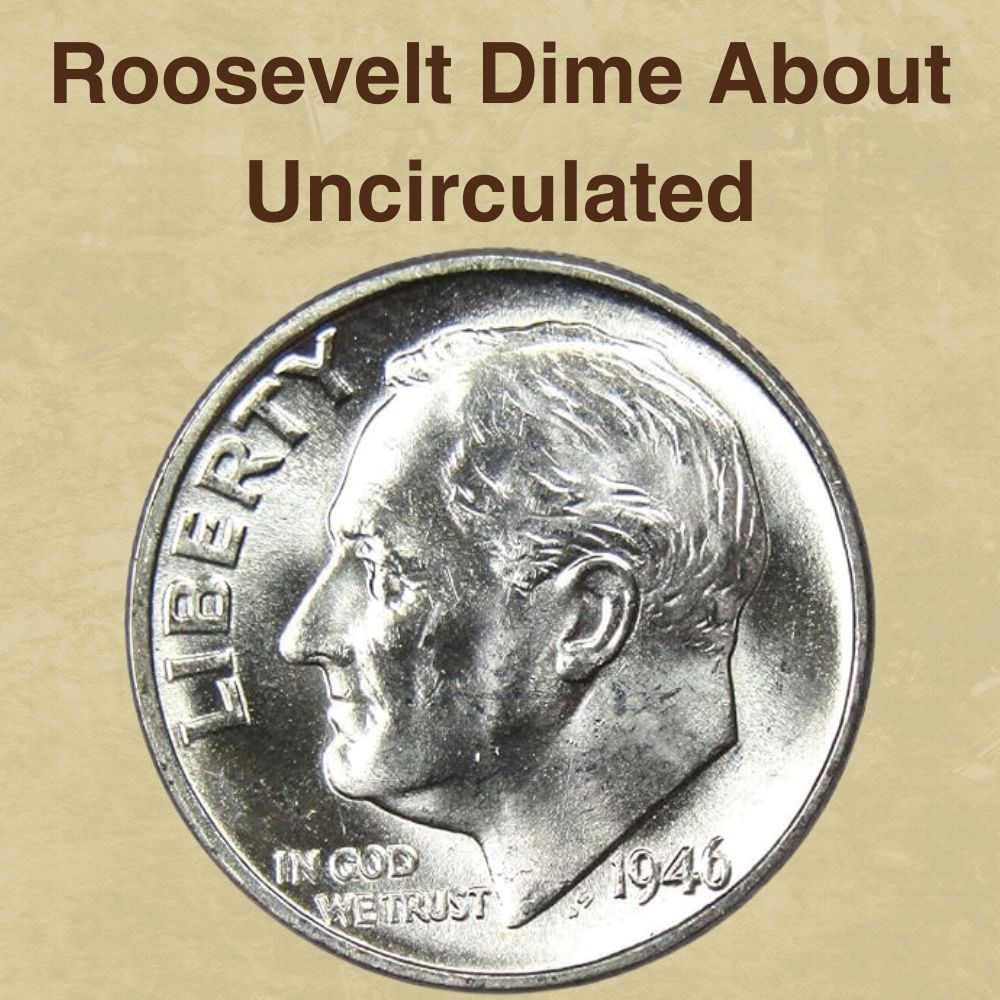
Circulated coins in this grade are the best preserved such pieces possible. They look almost perfect but with slight traces of wear obtained after a short period spent in circulation.
Obverse
The President’s profile looks impressive, with only slight traces of wear on the hair above the ear, the highest point of this design. Mint luster is mostly preserved, so you can consider these coins attractive and collectible.
Want to Find the best coin dealer near you? Here we can help. (with customer reviews and Rating)
Reverse
Thanks to 1/2 to 3/4 of mint luster visible on the reverse, these dimes look beautiful and attract many numismatists. They are an excellent option for novices to get a great specimen for an affordable price.
8. Mint State (MS 60 to MS 70)
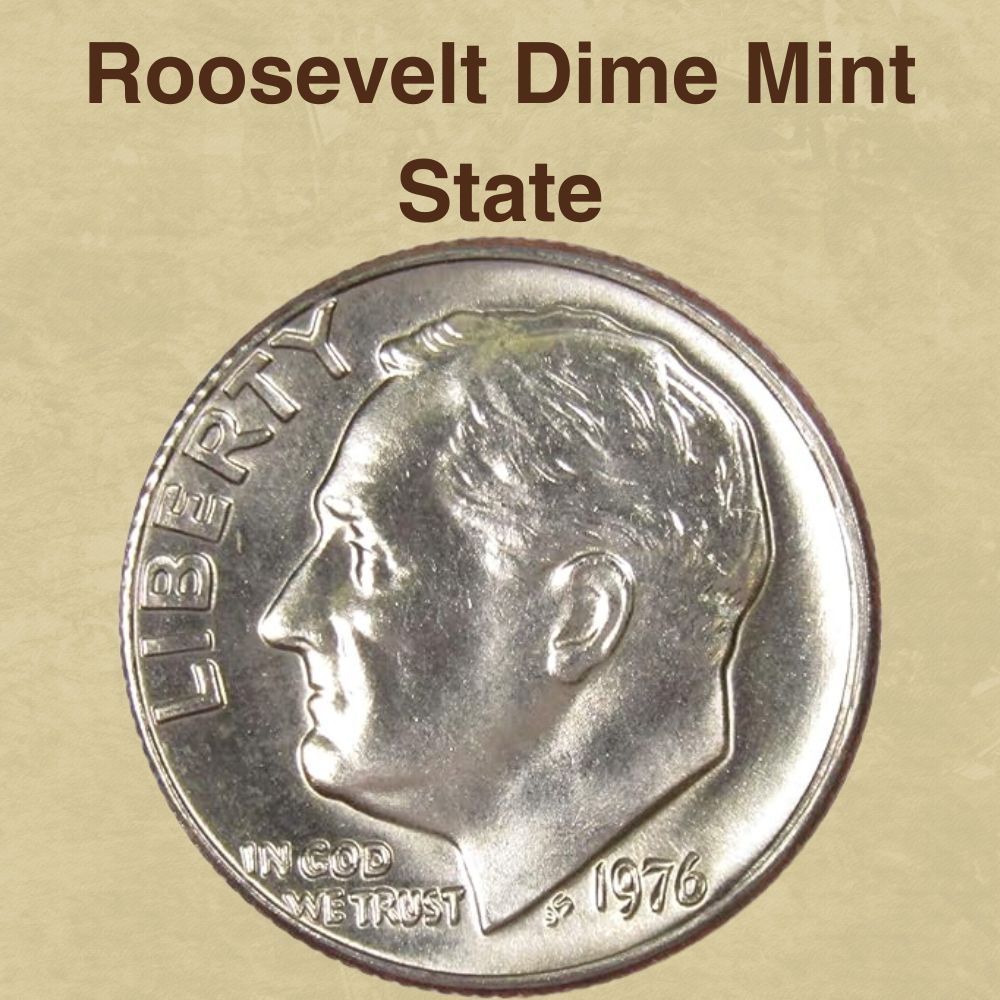
The Roosevelt dimes in the mint state are coins in ideal or almost perfect condition without any traces of circulation. Interestingly, you can find several sub-ranks for these pieces, depending on the presence or absence of contact marks or signs of friction against the bag material where they were stored.
Most experts find grading these coins more demanding than estimating pieces that spent years in circulation. The differences in their surfaces are more subtle and challenging to notice, requesting experience and ultimate skill.

